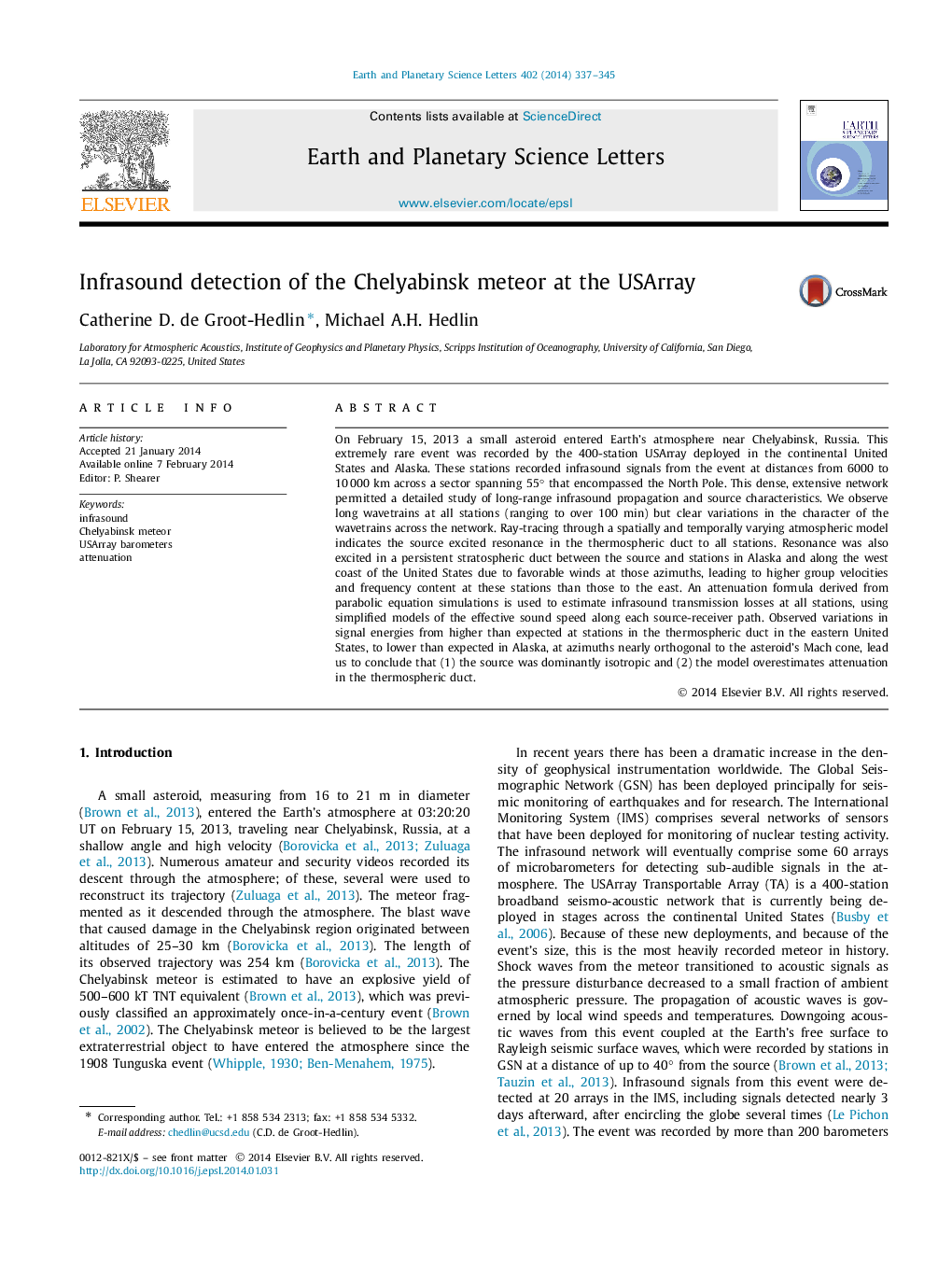| کد مقاله | کد نشریه | سال انتشار | مقاله انگلیسی | نسخه تمام متن |
|---|---|---|---|---|
| 4677021 | 1634754 | 2014 | 9 صفحه PDF | دانلود رایگان |

• Infrasound from the Chelyabinsk meteor was recorded at barometers across the USArray.
• Signals vary across the US, with faster, higher frequency arrivals in the west.
• We use spatially and temporally-varying atmospheric models of sound and wind speeds.
• Ray-tracing shows stratospheric ducting to the west; thermospheric ducts to the east.
• Waveform energies for stratospheric and thermospheric arrivals are compared.
On February 15, 2013 a small asteroid entered Earth's atmosphere near Chelyabinsk, Russia. This extremely rare event was recorded by the 400-station USArray deployed in the continental United States and Alaska. These stations recorded infrasound signals from the event at distances from 6000 to 10 000 km across a sector spanning 55° that encompassed the North Pole. This dense, extensive network permitted a detailed study of long-range infrasound propagation and source characteristics. We observe long wavetrains at all stations (ranging to over 100 min) but clear variations in the character of the wavetrains across the network. Ray-tracing through a spatially and temporally varying atmospheric model indicates the source excited resonance in the thermospheric duct to all stations. Resonance was also excited in a persistent stratospheric duct between the source and stations in Alaska and along the west coast of the United States due to favorable winds at those azimuths, leading to higher group velocities and frequency content at these stations than those to the east. An attenuation formula derived from parabolic equation simulations is used to estimate infrasound transmission losses at all stations, using simplified models of the effective sound speed along each source-receiver path. Observed variations in signal energies from higher than expected at stations in the thermospheric duct in the eastern United States, to lower than expected in Alaska, at azimuths nearly orthogonal to the asteroid's Mach cone, lead us to conclude that (1) the source was dominantly isotropic and (2) the model overestimates attenuation in the thermospheric duct.
Journal: Earth and Planetary Science Letters - Volume 402, 15 September 2014, Pages 337–345